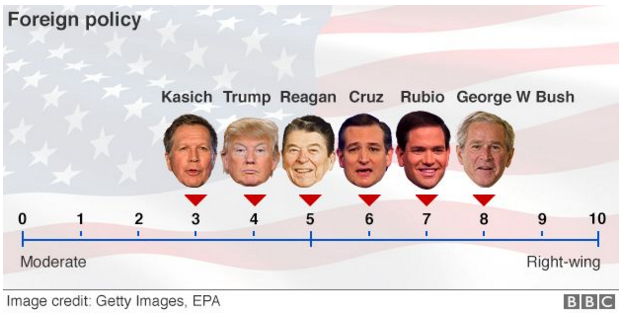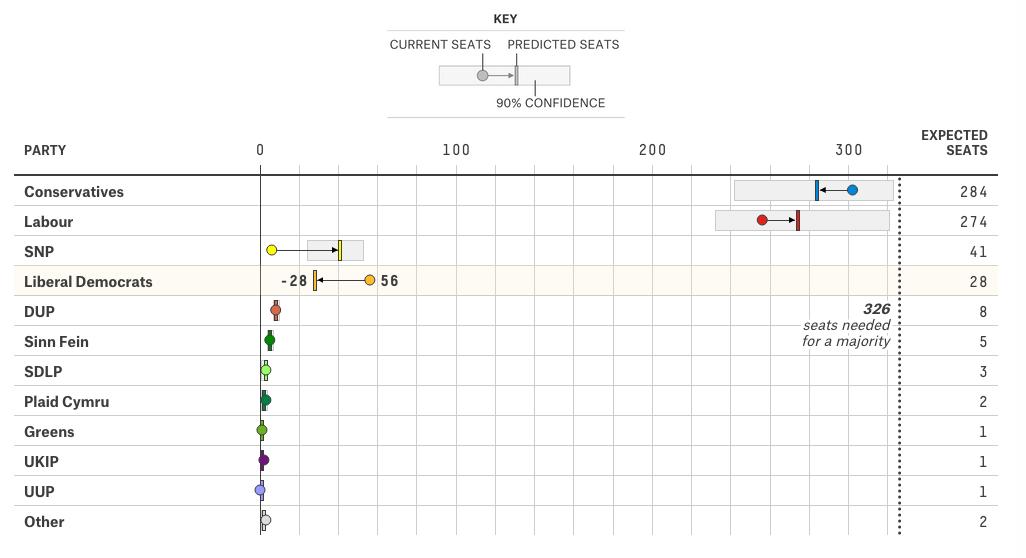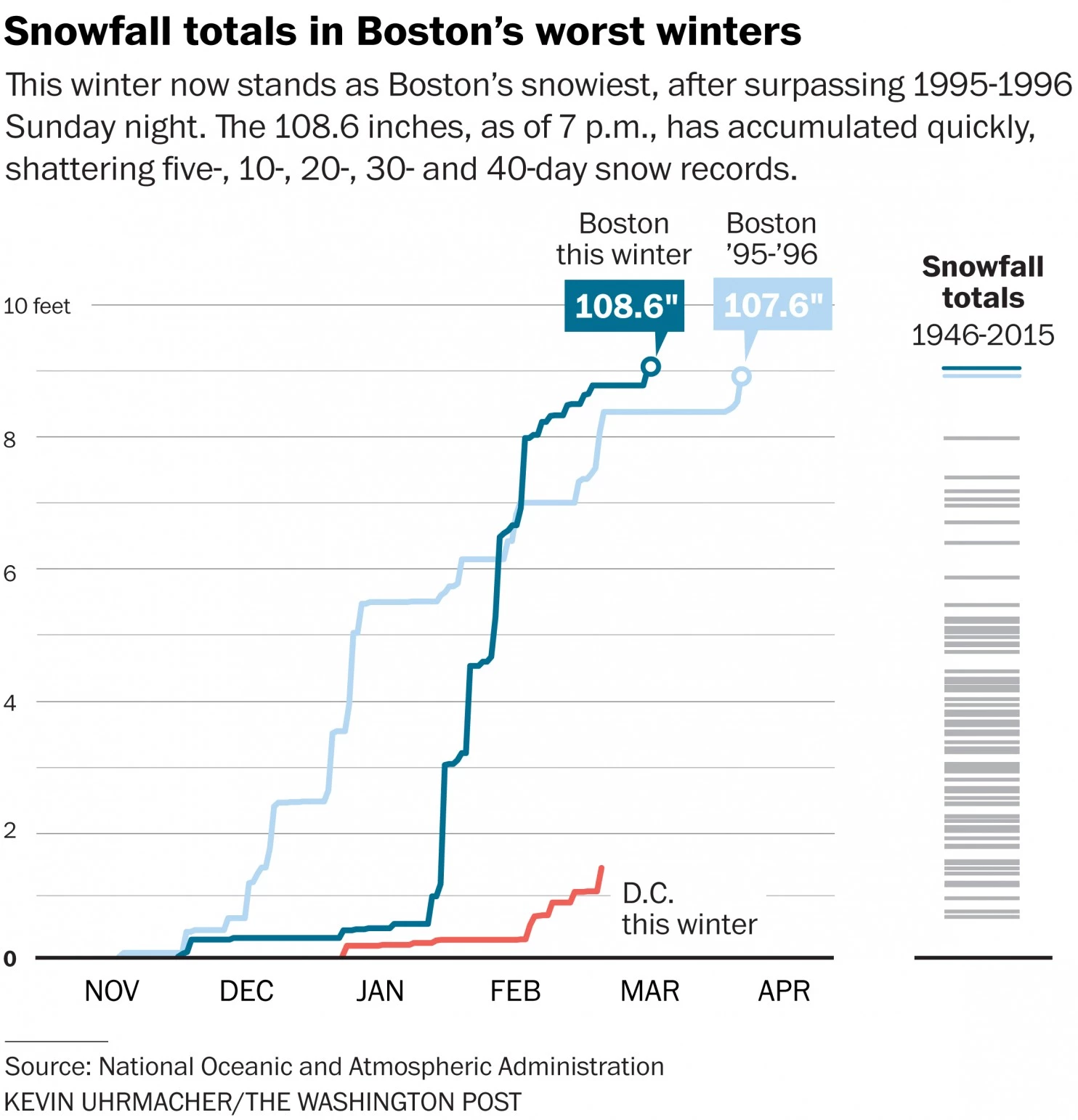Another Tuesday, more primary and caucus victories for Donald Trump in his quest to become the Republican nominee. However one of the refrains you hear from the right is that he is not a true conservative. How true is that? Well the BBC put together an article comparing Trump to the other candidates and some previous Republican presidents on various issues like foreign policy.

Okay, so it sort of works with cutout photos of people pasted onto an American flag background. But I cannot quite take the piece seriously because of its amateurish design. Maybe the American flag makes sense as a background graphic? But the heads? Surely not.
So what happens if we take a more serious approach—though I admit originally the idea of a Trump candidacy seemed farcical—to this graphic? Well I took a quick stab this morning.

Credit for the original goes to the BBC graphics department.









